Rabindranath Tagore Biography – Explore the life of Gurudev, Nobel laureate poet, philosopher, and educationist. Learn about his early life, works, role in India’s freedom struggle, Shantiniketan, Rabindrasangeet, and global legacy that continues to inspire generations.
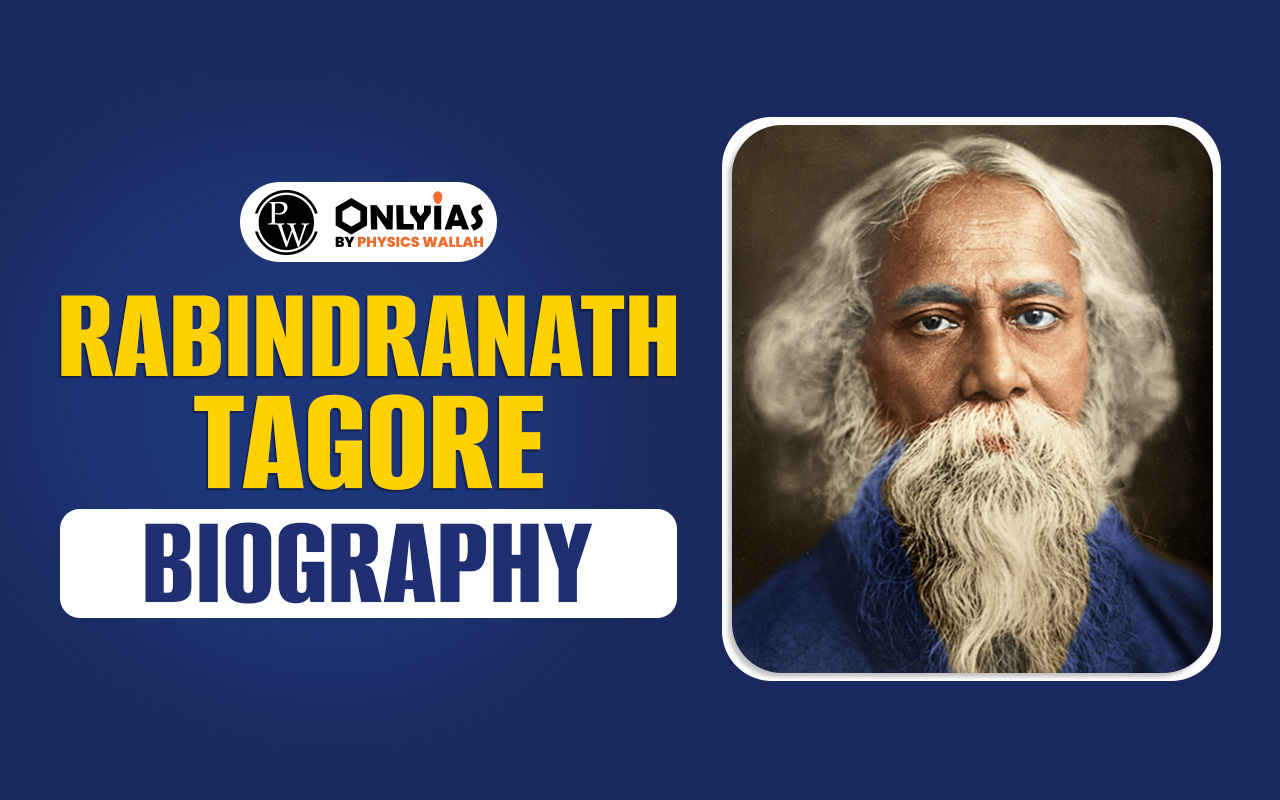
Rabindranath Tagore Biography is one of the most important topics for understanding the scenario and role of Indian Literary work in Indian Independence. Rabindranath Tagore, a Nobel laureate poet, writer, and philosopher from India, is renowned for his contributions to literature, music, and art.
Tagore’s impact extends globally, shaping cultural understanding and inspiring generations with his profound insights and creativity. Rabindranath Tagore voiced nationalist sentiments through his writings, promoting Indian independence and cultural pride, contributing to the freedom movement’s intellectual and emotional landscape.
Let us have a look at the Rabindranath Tagore Biography along with other details related to Rabindranath Tagore Early Life, Education, and Awards. The literary works of Rabindranath Tagore and his involvement in the Indian Freedom Struggle are also given.
Also Read: Rabindranath Tagore Jayanti 2025
Rabindranath Tagore was a popular figure in the Indian cultural renaissance. Rabindranath Tagore was a polymath poet, philosopher, musician, writer, painter and educationist. Rabindranath Tagore was the first Asian to win the Nobel Prize in 1913 for his collection of poems, Gitanjali.
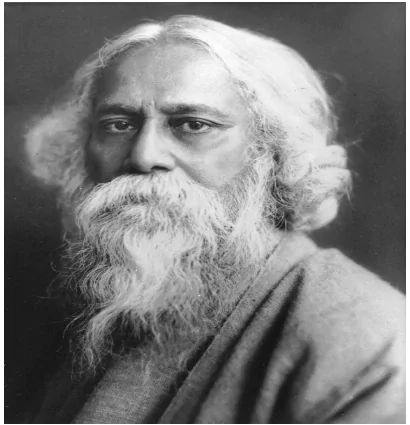
Rabindranath Tagore had introduced the fresh prose and verse styles along with colloquial language, liberating Bengali literature from the confines of classical Sanskrit norms. Rabindranath Tagore bridged the gap between Indian and Western cultures, enriching both sides through his contributions.
Rabindranath Tagore was called Gurudev, Kabiguru, and Biswakabi affectionately and his songs are popularly known as Rabindrasangeet. Rabindranath Tagore penned down the national anthems of India and Bangladesh – the Jana Gana Mana and the Amar Shonar Bangla respectively are from the Rabindrasangeet.
The table below contains the overview of life of Rabindrath Tagore from his birth to death, Family and other details:
Rabindranath Tagore Overview |
|
| Born | 7 May, 1861 |
| Place of Birth | Calcutta, British India |
| Pen Name | Bhanu Singha Thakur (Bhonita) |
| Father | Debendranath Tagore |
| Mother | Sarada Devi |
| Spouse | Mrinalini Devi |
| Children | Renuka Tagore, Meera Tagore, Rathindranath Tagore,Shamindranath Tagore, and Madhurilata Tagore |
| Died | 7 August, 1941 |
| Place of Death | Calcutta, British India |
| Award | Nobel Prize in Literature (1913) |
| Title | Bard of Bengal |
| Sobriquets | Gurudeb, Kobiguru, and Biswokobi |
Rabindranath Tagore was a Bengali poet and Brahmo philosopher who wrote poetry, novels, short tales, plays, paintings, sketches, and music during his career. Though he also created novels, essays, short stories, narrative plays, and hundreds of songs, Tagore’s literary career is disproportionately shaped by his status as a poet.
Tagore’s short stories are probably the most well-known of his work, in fact, he is recognized for having created the Bengali-language form of the genre. His writings are often praised for their lyrical, positive, and rhythmic qualities. However, the majority of these stories are based on quite simple topics such as the lives of regular people and children.
Rabindranath Tagore, born on May 7, 1861, in Kolkata, India. He was born into a distinguished family in Kolkata (formerly Calcutta), West Bengal, India.
Rabindranath Tagore’s childhood and upbringing were greatly influenced by the cultural and literary environment of his family. He showed an early interest in literature, music, and art, and his talents were nurtured in a nurturing and intellectually stimulating household.
His early education began at home under the guidance of private tutors. He also attended various schools in Kolkata, where his unconventional approach to learning set him apart. Tagore was more interested in exploring his own interests and curiosities than adhering to traditional educational methods.
.Rabindranath Tagore came from a distinguished and culturally rich family. His father, Debendranath Tagore, was a prominent philosopher and social reformer in Bengal, India. His mother was Sarada Devi. Rabindranath Tagore was the youngest of thirteen children.
Rabindranath Tagore’s father was Debendranath Tagore. He was a prominent figure in the Bengali Renaissance and a leader of the Brahmo Samaj, a reformist Hindu movement. Debendranath Tagore was not only a philosopher and religious reformer but also a writer and composer of devotional songs. He played a significant role in shaping Rabindranath Tagore’s upbringing and education, fostering his creativity and intellectual development.
Rabindranath Tagore’s mother was Sarada Devi. She was a significant influence on Tagore’s life, particularly in his formative years. Sarada Devi was a devout and compassionate woman who played a crucial role in shaping her son’s values, spirituality, and worldview. Tagore had deep respect and admiration for his mother, and her teachings and affection profoundly impacted his literary and philosophical works.
Rabindranath Tagore, the renowned poet, novelist, playwright, and composer, had several siblings. His brothers were significant figures in their own right, though their accomplishments might not be as widely recognized as Rabindranath’s.
Rabindranath Tagore’s wife was Mrinalini Devi. They were married in 1883 when Tagore was just 22 years old. Mrinalini Devi was the daughter of Beni Madhab Sil, a wealthy landlord. Their marriage was arranged by Tagore’s father, Debendranath Tagore, who was a prominent figure in the Brahmo Samaj, a socio-religious reform movement in India.
In 1878, Rabindranath traveled to London for studies. He began studying law at University College London but left before completing it. Instead, he delved into English Literature and explored the music of England, Ireland, and Scotland. Writing had been a passion for Rabindranath since childhood. His first poem, “Abhilash,” was written at the age of 13 and was published in Tattvabodhini magazine in 1874.
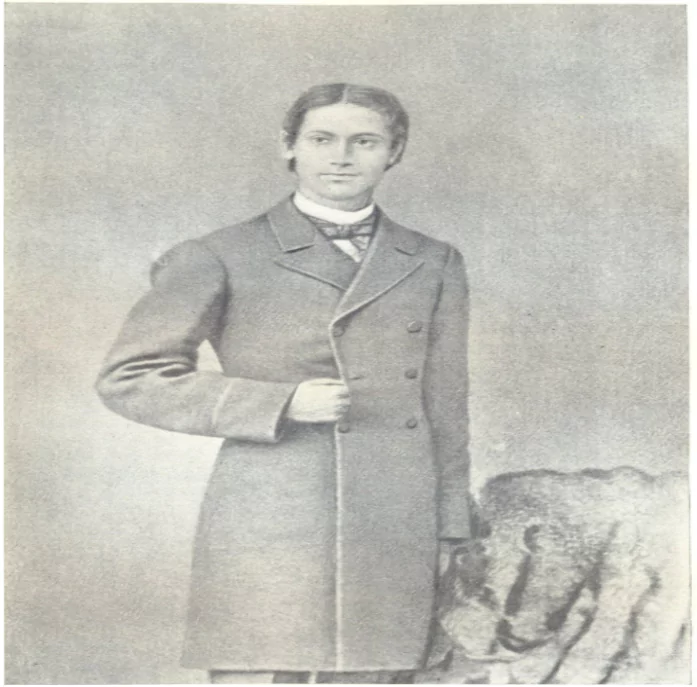
Following his time abroad, Rabindranath returned to India. It was during this period that he immersed himself in the essence of English, Irish, and Scottish literature and music. His exposure to these cultural facets significantly influenced his artistic development. It was also around this time that he entered into matrimony with Mrinalini Devi, who was merely ten years old at the time.
Rabindranath Tagore’s educational journey was a blend of both conventional schooling and his own passionate pursuit of literature and the arts, ultimately shaping his unique and creative perspective that would go on to influence his remarkable contributions to the world of culture and literature.
His relationship with nature also played a significant role in shaping his worldview and artistic expressions. Tagore’s close connection to the natural world is often reflected in his poetry, where he seamlessly weaved elements of nature with human emotions.
Rabindranath also wrote songs and the biggest admirer of his songs was Swami Vivekananda himself. His music was influenced by classical music, Carnatic music, Gurbani, and Irish music. He also started writing stories from a young age.
Rabindranath Tagore’s association with Shantiniketan marked a significant chapter in his life. Shantiniketan, located in Birbhum district of West Bengal, India, became a hub of learning, creativity, and cultural exchange under his guidance.
In 1901, Tagore established an experimental school named “Patha Bhavana” in Shantiniketan, which later grew into Visva-Bharati University. His vision for education was unconventional, emphasizing a holistic approach that harmonized nature, arts, and intellectual pursuits. He aimed to break away from rote learning and cultivate a sense of free thought and creativity among students.

The open-air classrooms at Shantiniketan showcased Tagore’s belief in the symbiotic relationship between education and nature. Underneath the trees, students engaged in discussions, imbibing knowledge in a serene environment. The curriculum encompassed a fusion of Western and Indian educational philosophies, encouraging students to explore a wide spectrum of disciplines.
Tagore invited scholars, artists, and thinkers from around the world to Shantiniketan, fostering a global exchange of ideas and cultural influences. This unique approach enriched the educational experience, exposing students to diverse perspectives.
Integral to Shantiniketan was Tagore’s concept of “Gurudev” or the teacher-student relationship based on mutual respect and learning. He considered education a lifelong journey and envisioned Shantiniketan as a center for the cultivation of the mind, spirit, and character.
Tagore’s own contributions to literature, music, and art deeply influenced the atmosphere at Shantiniketan. His compositions, known as Rabindrasangeet, were taught and performed with zeal, echoing his belief in the power of art to connect individuals and communities.
Recently Santiniketan became the 41st UNESCO World Heritage Site in India and the third in West Bengal, after the Sundarbans National Park and the Darjeeling Mountain Railways. Last year, the state’s Durga Puja got space in “Intangible Cultural Heritage of humanity” under UNESCO.
Internationally, Gitanjali Tagore’s best-known collection of poetry, for which he was awarded the Nobel Prize in Literature in 1913. Tagore was the first non-European to receive a Nobel Prize in Literature and the second non-European to receive a Nobel Prize after Theodore Roosevelt.
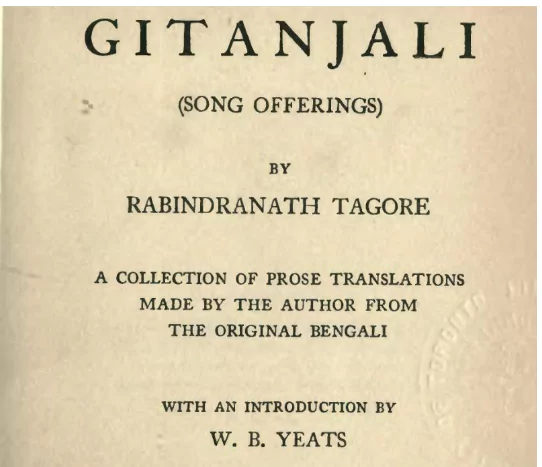
Rabindranath Tagore’s literary works span a vast and diverse range of genres, including poetry, prose, fiction, drama, and songs. His creative output is celebrated for its profound philosophical insights, emotional depth, and innovative exploration of human experiences. Here are some of his notable literary contributions:
The table below contains the Genre wise list of notable literary contributions of Rabindranath Tagore:
| Genre |
Description |
| Poetry | Tagore’s poetry is perhaps his most celebrated literary form. His collection “Gitanjali” (Song Offerings) earned him the Nobel Prize in Literature in 1913. His poems are characterized by their spiritual essence, deep connection to nature, and exploration of human emotions. |
| Prose | Tagore’s prose writings encompass essays, short stories, and philosophical discourses. His essays often delve into topics such as education, culture, and social issues. His short stories, like those in “Galpaguchchha” (Bunch of Stories), capture a wide range of human experiences and emotions. |
| Novel | Tagore’s novels are known for their psychological depth and intricate character studies. Works like “Gora” and “Ghare-Baire” (The Home and the World) explore complex themes of identity, nationalism, and love in the context of changing social and political dynamics. |
| Plays | Tagore was a prolific playwright, and his plays are notable for their exploration of societal norms, relationships, and philosophical dilemmas. “Chitra,” “Raja,” and “Dak Ghar” (The Post Office) are some of his famous plays that highlight his versatility as a writer. |
| Short Stories | Tagore’s short stories are a treasure trove of human experiences. He captured everyday life and emotions in stories like “Kabuliwala” and “The Postmaster,” showcasing his ability to find beauty and depth in the ordinary. |
| Songs | Tagore’s songs, known as Rabindrasangeet, are an integral part of his literary legacy. These songs combine poetry and music to create a unique artistic form that touches the soul. They often celebrate nature, love, and spirituality. |
| Essay Philosophical Works | Tagore’s essays and philosophical writings reflect his thoughts on education, nationalism, spirituality, and the relationship between humans and nature. His works like “Sadhana” and “Nationalism” offer profound insights into these subjects. |
At the age of sixty, Rabindranath Tagore took up drawing and painting, showcasing his works in successful exhibitions across Europe after making his debut appearance in Paris, encouraged by artists he met in the south of France.
Despite his natural talent for writing, music, playwriting, and acting, painting proved elusive for Tagore. He expressed his desire to paint in letters and reminiscences, attempting to master the art.
In a letter to Jagadish Chandra Bose in 1900, at nearly forty and already a celebrated writer, Tagore revealed his attempts at sketching, acknowledging that his pictures were not intended for prestigious salons in Paris. He humorously acknowledged using the eraser more than the pencil and, dissatisfied with the results, decided that becoming a painter was not his path.
The National Gallery of Modern Art in India houses 102 works by Tagore in its collections, reflecting his exploration of visual art alongside his literary and musical endeavors.
Rabindranath Tagore was very involved in politics and strongly supported Indian nationalists fighting against British rule. He created many patriotic songs to inspire people to fight for Indian independence.
His literary works were widely praised, even by Mahatma Gandhi. Rabindranath Tagore’s poems have been written in the spirit of freedom, independence, and patriotism.
A significant moment in Tagore’s political journey was when he gave up his knighthood in protest against the Jallianwala Bagh massacre in 1919, showing his deep dedication to Indian independence.
Besides being a famous writer, Tagore was also a patriotic Indian involved in literature, art, music, and politics. His various contributions have had a lasting impact on India’s culture and politics. “Jana Gana Mana” written by Rabindranath Tagore was played for the first time during the Congress session in Calcutta in 1911.
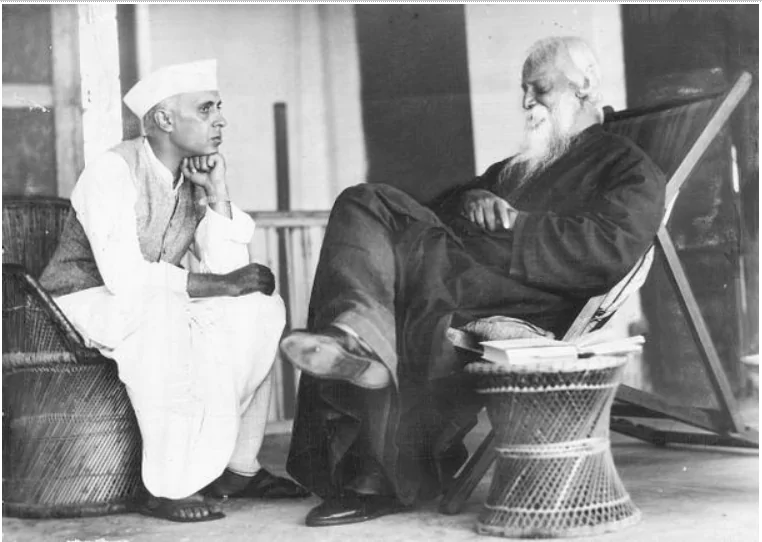
Gurudev Rabindranath Tagore was a fearless person who dedicated his entire life to achieving complete independence for united India before gaining freedom from the British.
He believed that true freedom depended on the proper education and self-sufficiency of the Indian people, and he devoted himself to this goal.
Rabindranath Tagore’s views on nationalism were complex and thought-provoking. While he was a fervent advocate for the cultural and spiritual upliftment of India, his approach to nationalism was distinct from the mainstream political notions of his time.
Tagore expressed concerns about the aggressive and narrow forms of nationalism that were emerging, both in India and around the world.
Tagore believed in a more inclusive and universalistic approach to nationalism. He envisioned a world where different cultures could coexist, enriching each other without succumbing to superiority or dominance. He emphasized the need for a harmonious relationship between nations, highlighting the dangers of fanaticism and aggressive patriotism.
His vision of nationalism was closely tied to humanism, emphasizing the value of human beings over the rigid lines of nationality. He cautioned against blind allegiance to the nation and stressed the importance of cultivating a sense of humanity and empathy.
Tagore’s stance on nationalism drew both praise and criticism. Some appreciated his holistic perspective, while others accused him of being detached from the pressing political struggles of the time. Regardless, his ideas remain relevant in the context of today’s global challenges, emphasizing the importance of unity, understanding, and a broader perspective beyond national boundaries.
In essence, Rabindranath Tagore’s approach to nationalism was characterized by a deep concern for humanity, cultural preservation, and the need to transcend narrow divisions for the betterment of society as a whole.
Tagore’s literary creations transcend boundaries and languages, resonating with people from various cultures and backgrounds. His ability to capture the essence of human emotions and his deep philosophical reflections continue to inspire and influence generations of readers and thinkers worldwide.
Rabindranath Tagore’s prolific contributions to literature, arts, and philosophy earned him numerous awards and honors throughout his life. Here is a list of some of the most notable awards won by Tagore:
| Award | Year | Description |
| Nobel Prize in Literature | 1913 | Tagore became the first Asian to win the Nobel Prize in Literature for his collection of poems, “Gitanjali” (Song Offerings). The Nobel Committee recognized his profoundly sensitive, fresh, and beautiful verse that conveyed his deeply spiritual and artistic thoughts. |
| Knight Commander of the Order of the British Empire | 1915 | Tagore was bestowed with this honor by the British Crown in recognition of his literary achievements and his efforts to promote international understanding. |
| Gold Medal of the Royal Asiatic Society, Bengal | 1917 | Tagore was awarded this medal for his outstanding contribution to Bengali literature and his efforts to bridge cultural gaps. |
| Freedom of the City of London | 1921 | Tagore was granted the Freedom of the City of London in recognition of his outstanding contributions to literature and culture. |
| Pride of India | 2019 | Tagore was posthumously awarded the “Pride of India” award by the Calcutta Chamber of Commerce, recognizing his immense contributions to the nation. |
These awards are just a glimpse of the recognition Rabindranath Tagore received for his exceptional literary and cultural achievements. His influence extended far beyond accolades, as his works continue to touch hearts and inspire minds worldwide.
Rabindranath Tagore, the renowned Bengali polymath who reshaped Bengali literature and music as well as Indian art with Contextual Modernism in the late 19th and early 20th centuries, passed away on August 7, 1941.
Tagore was not only a poet, novelist, playwright, and composer but also a philosopher and social reformer. His death marked the end of an era, but his legacy continues to inspire generations across the globe.
The legacy of Rabindranath Tagore is profound and enduring, spanning literature, music, art, education, and the broader realm of culture. His contributions have left an indelible mark on India and the world, shaping the course of thought, creativity, and social change. Here are some aspects of Tagore’s legacy:
His contributions to literature, arts, philosophy, and cultural exchange remain as vibrant and impactful as ever, ensuring that his influence lives on through his works and the institutions he founded, such as Visva-Bharati University in Shantiniketan. Tagore’s departure marked the end of a remarkable life, but his ideas and creations continue to illuminate the world.
The legacy of Rabindranath Tagore is profound and enduring, spanning literature, music, art, education, and the broader realm of culture. His contributions have left an indelible mark on India and the world, shaping the course of thought, creativity, and social change.
The table below contains some aspects of Rabindranath Tagore’s legacy:
| Literature and Poetry | Tagore’s literary works, including poems, novels, short stories, and essays, have had a lasting impact on world literature. His poetic expressions, infused with spirituality and deep insights into human emotions and nature, continue to resonate with readers across generations. |
| Rabindrasangeet | Tagore’s musical compositions, known as Rabindrasangeet, have become an integral part of Bengali culture. These songs blend poetry with melody and carry messages of love, spirituality, and universal harmony. They continue to be sung and cherished by millions. |
| Education | Tagore’s educational philosophy, as exemplified by Visva-Bharati University in Shantiniketan, emphasizes holistic learning, cultural exchange, and the harmony between nature and education. His approach to education inspired alternative pedagogical methods and institutions globally. |
| Nationalism and Internationalism | Tagore’s nuanced views on nationalism, emphasizing humanism, cultural diversity, and understanding among nations, continue to guide discussions on identity and nationhood. His vision of a world united through cultural exchange and mutual respect remains relevant. |
| Social Reforms | Tagore’s works addressed social issues, advocating for gender equality, women’s rights, and social justice. His writings challenged traditional norms and contributed to discussions on modernization and progress. |
| Global Recognition | His Nobel Prize in Literature not only brought international acclaim to him but also shone a spotlight on Indian literature and culture. Tagore’s recognition as a global figure enriched cross-cultural understanding and dialogue. |
| Artistic Expressions | Beyond literature and music, Tagore’s artistic talents extended to painting and theater. His paintings captured his unique perspective on life, nature, and spirituality, while his plays delved into intricate human emotions and social dynamics. |
| Philosophical Insights | Tagore’s philosophical ideas on spirituality, the interconnectedness of all life, and the pursuit of truth continue to inspire seekers and thinkers worldwide. |
The table below contains Top 10 most memorable Quotes of Rabindranath Tagore:
|
|---|
|
Related Links |
|
| Maharana Pratap Biography | Raja Ram Mohan Roy Biography |
| Jyotiba Phule Biography | APJ Abdul Kalam |
| Mahatma Gandhi | Netaji Subhas Chandra Bose |
Rabindranath Tagore was a renowned Bengali poet, writer, philosopher, musician, and artist from India. He was the first Asian to win the Nobel Prize in Literature in 1913 for his collection of poems, "Gitanjali."
Tagore's notable works include "Gitanjali" (Song Offerings), "Gora," "Ghare-Baire" (The Home and the World), "Kabuliwala," and his numerous Rabindrasangeet compositions.
Rabindranath Tagore was born on May 7, 1861, in Calcutta, British India (now Kolkata, India).
Tagore's notable works include "Gitanjali" (Song Offerings), "Gora," "Ghare-Baire" (The Home and the World), "Kabuliwala," and his numerous Rabindrasangeet compositions.
Rabindranath Tagore is known as "The Bard of Bengal." He was also known as Gurudeb, Biswokobi, and Kobiguru.
Rabindranath Tagore was born on May 7, 1861, and this day is celebrated as Rabindranath Tagore Jayanti or Rabindra Jayanti.
Tagore died at the age of 80, on 7th August, 1941.
Rabindranath Tagore wrote numerous poems, and some of his most famous ones include Gitanjali (Song Offerings), Where the Mind is Without Fear, The Crescent Moon (Chandali), The Kabuliwala, The Stream of Life, The Home and the World (Ghare-Baire), Bahir.
Rabindranath Tagore stepped down as a knight in protest over the Jallianwala Bagh massacre (Amritsar massacre) on April 13, 1919, . He wrote to Lord Chelmsford, the British Viceroy, to convey his grief about the British army's brutal murder of defenseless villagers. He claimed that such crimes gave the title of honor a shameful symbol in the form of humiliation.
In an exchange of honors, Mahatma Gandhi gave Rabindranath Tagore the title of "Gurudev" after Tagore had earlier awarded Gandhi the title of "Mahatma" (meaning "great soul").
Gitanjali, Rabindranath Tagore's collection of poetry, and his "profoundly sensitive, fresh and beautiful verse" were the reasons he was awarded the Nobel Prize in Literature in 1913. Tagore's poetic concept was effectively integrated into Western literature.

<div class="new-fform">
</div>
